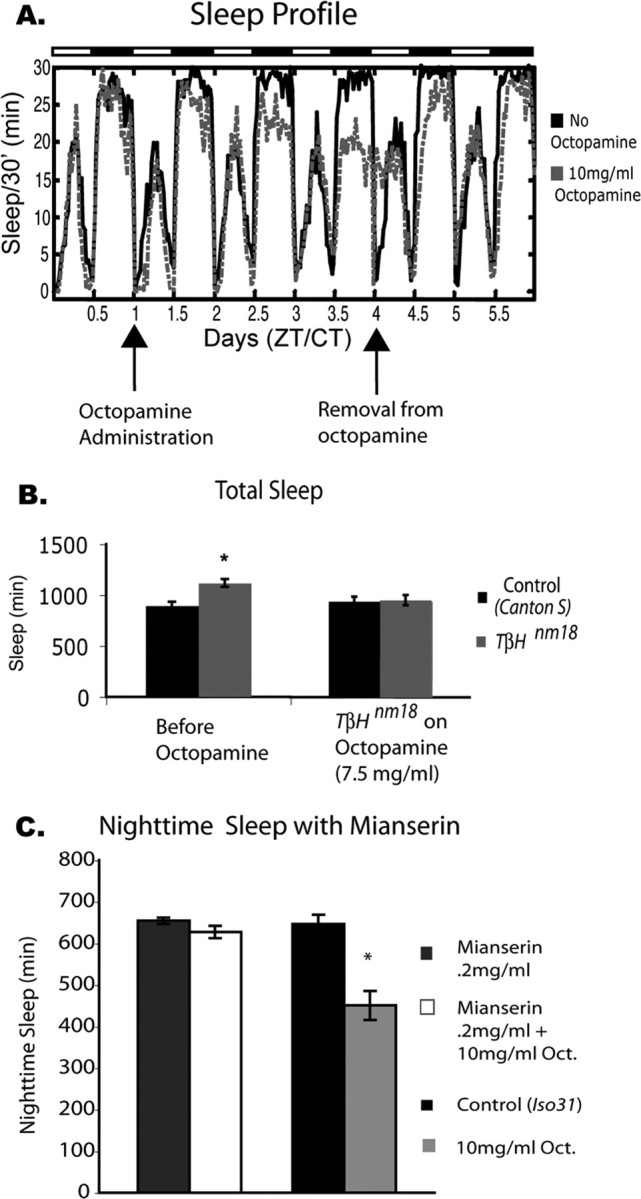Figure 6.

Oral administration of octopamine decreases sleep in Iso31 flies and TβHnm18 mutant flies. Female flies of the Iso31 strain were treated with octopamine and assayed for sleep. A, The sleep profile shows 1 d of baseline sleep, followed by administration of 10 mg/ml octopamine (gray dashed line) for 3 d. Octopamine was then removed and sleep was assayed for 2 more days. Control flies (black line) were fed normal food during this time. Arrows indicate the time when food was changed. The data are from 16 animals for each group. There was a significant decrease in nighttime sleep for the Iso31 flies on 10 mg/ml octopamine (mean ± SEM; control, 612.04 ± 8.47, n = 40; 10 mg/ml octopamine, 409.33 ± 19.77, n = 40; p ≤ 0.0001, two-way ANOVA). CT, Circadian time; ZT, Zeitgeber time. B, Sleep in TbHnm18 mutant flies is restored to control levels through the administration of octopamine. Before octopamine administration, TβHnm18 flies showed a significant increase in total sleep time; after administration of octopamine, sleep in TβHnm18 flies was not significantly different from that of control (Canton S) flies not on octopamine (Canton S, 796 ± 55 min; Canton S plus 7.5 mg/ml octopamine, 792 ± 54 min; n = 16 for each group). C, Coadministration of mianserin blocks the effect of octopamine on nighttime sleep. When 10 mg/ml octopamine was administered along with 0.2 mg/ml mianserin, there was no longer a significant drop in nighttime sleep (compare with columns on the right). Sleep in flies treated with mianserin alone was not significantly different from that of controls [mean ± SEM; mianserin, 654 ± 8, n = 32; mianserin plus 10 mg/ml octopamine, 627 ± 15, n = 32; Iso31 (Control), 647 ± 22, n = 32; 10 mg/ml octopamine, 450 ± 35, n = 32; p ≤ 0.001, two-way ANOVA].
